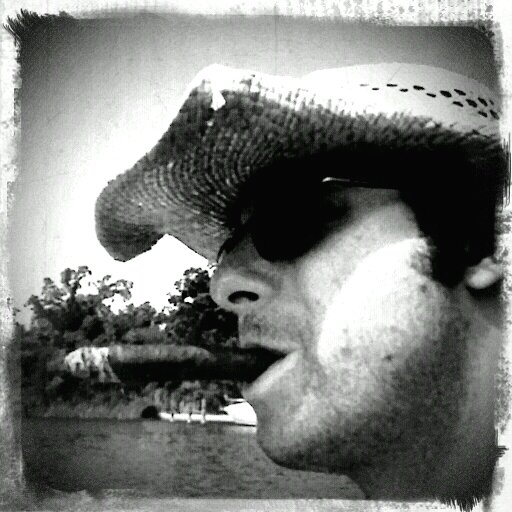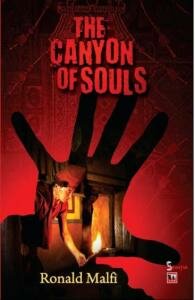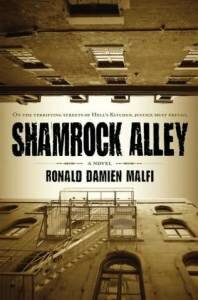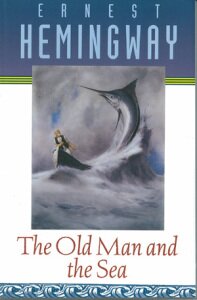
There are very few writers whose writing can make you speculate about a topic for a long time. Ronald Malfi is an example of such a writer. With works like Shamrock Alley and Via Dolorosa under his belt, he talks to Ahmed Faiyaz about his other book, Canyon of Souls and more.
Ahmed Faiyaz: To begin with, tell us when, where and how you began writing stories.
Ronald Malfi: I began writing when I was fairly young. I recall the first typewriter I owned – an old manual Olympia that seemed to weigh about fifty pounds. I was around eleven years old then, and I would come home from school and sit in front of that typewriter and hammer out a few pages. I was fascinated by the act of telling stories, and I each time I would finish one I would immediately start a new one. I still have all those old stories pack away in an old steamer trunk in my basement. There must be fifty or sixty of them in there.
AF: How long did it take for you to write The Canyon of Souls? Did it take any research, given that it is set in Nepal?
RM: The writing took about three or four months. The research took longer, because I knew very little about mountaineering or that region of the world. I read a lot of non-fiction accounts of people’s treks up certain mountains and I was fascinated by much of it. I realized that many of the books that impressed me the most were older books and there was a certain charm in the simplicity of the climb and the tools they used back then. I attempted to capture this in my book, wanting the climb itself to feel undated. I wrote about climbing equipment that may seem dated to fervent modern climbers, but I romanticized the climb for the readers because it harkens to an older time. Ideally, I wanted the book to appear timeless.
AF: Tim Overleigh, seems like a complex, brooding character who also has many strengths, his tenacity for one. How much of Tim do you see in yourself? Or is he influenced by someone else you’ve met?
RM: Tim is a man mourning the mistakes of his past—particularly his failed relationship with his dead wife—and that, in turn, has made him shy away from the life he once had for the life of a recluse and an alcoholic. Those attributes are solely Tim’s, though as a human being, I can attest to having made mistakes in my past, in various relationships or with how I’ve handled certain situations in my life. I find that when I write, I am more honest with myself as a person while also being somewhat more daring with my characters. This comes through in just how far I enabled Tim to sink into his depression, and how far I enabled him to go to get out of it. I think if I met Tim Overleigh at a bar, I might have a drink or two with him, comment on how he seemed like a nice enough guy and then left him to his demons.
AF: Why Nepal? Were you influenced by a journey you made?
RM: I have never been to Nepal, but after thinking of writing a novel about a mountaineering expedition, I could think of no other place. There is a certain mystique, a certain beauty, in what I believe Nepal to be. Perhaps it is the same way some people might think of New York City or Alaska if they’ve never actually been there. When I started reading texts about Nepal, to include the geography, politics, and (most interesting to me) the spirituality, I knew it was the perfect setting to tell this story. The book itself is about spirituality, and I felt that setting it in a place like Nepal kept the spiritual aspect of the novel grounded in reality, whereas it might have seemed forced or unbelievable had I set it anywhere else.
AF: Did you find it difficult to move forward at any point during the writing process?
RM: Each book is a different process. With The Canyon of Souls, the writing went very quickly. No doubt you’ve heard writers talk about books that write themselves – well, this was one of those books. Also, as part of my general writer’s rule, I always end my day of writing right in the middle of a scene, so I know exactly where to pick up and start again the following day. This way, I’m not faced with staring at a blank computer screen wondering what to write next.
AF: Looking back – given a choice, would you change any part of the novel or frame it differently?
RM: I might rethink my desire to have the climb itself resemble some of those older climbs I read about in books, and make it more modern, and perhaps get more detailed in the intricacies of climbing. Avid climbers have read the book here in the U.S. and have said they had perceived it to be more of a “climbing” novel as opposed to a thriller when they first picked it up in a bookstore. While it certainly is a thriller, I think I would have focused more on the technical aspects of the climb to appease those readers as well. But I guess you can’t please everyone!
AF: Do you believe The Canyon of Souls can be made into a film someday?
RM: I think it could be made into a great film. I tend to be a visual writer, and I am very focused on characters’ development and interaction. Throw in a little Hollywood special effects and I think it would be a very enjoyable film. I can almost imagine the gorgeous vistas of the mountain ranges on the big screen – that would certainly be something to see.
AF: Certain books usually leave an everlasting print in our memory. Which books have had the most influence on you and your writing? Your favorite genre when it comes to reading; and writing?
RM: There is so much! When I was a kid, I burned through every Stephen King book I could get my hands on, and while I don’t read as much of King’s stuff today as I once had, I think his writing was instrumental in giving my younger self the discipline and drive to sit down at that old typewriter at age eleven and write. Ernest Hemingway’s novels also resonate with me. Studying Hemingway’s prose, one cannot overlook his economy of word; of how momentous things are spoken of so simply. It is beautiful writing. Also, I’m a big believer in Hemingway’s “ice-berg theory” of storytelling, where the author only lets the readers see the tip of the ice berg – the underlying conflict; the discordant relationships between the characters is what the reader must surmise as what the rest of the ice-berg might look like.
AF: What next do we see from Ronald Malfi?
RM: The Canyon of Souls is my first publication to come out in India, but I’m hoping to continue working with the folks at Grey Oak in publishing some of my other titles. It’s a wonderful feeling to have one’s work embraced by another country, another culture.





